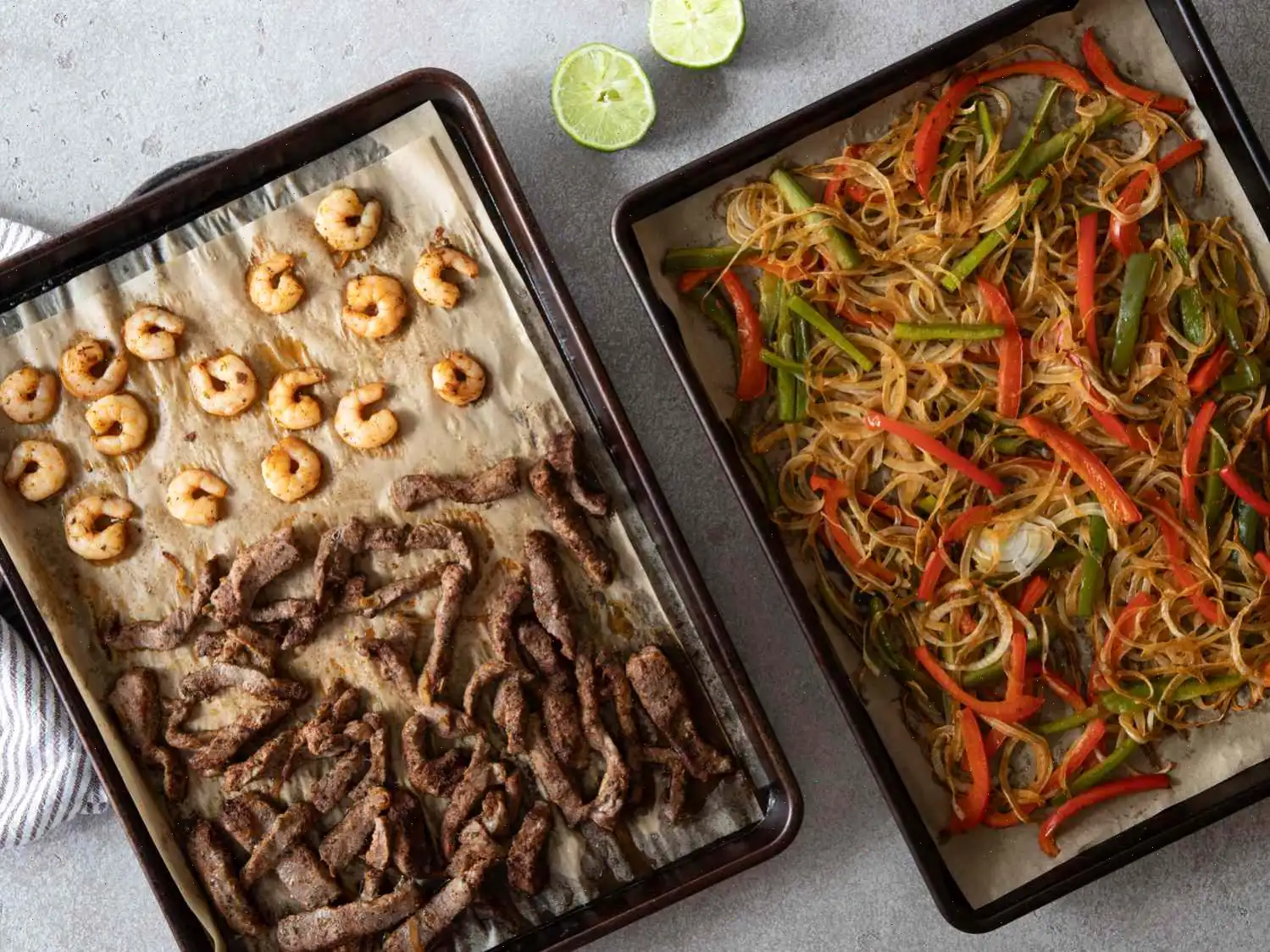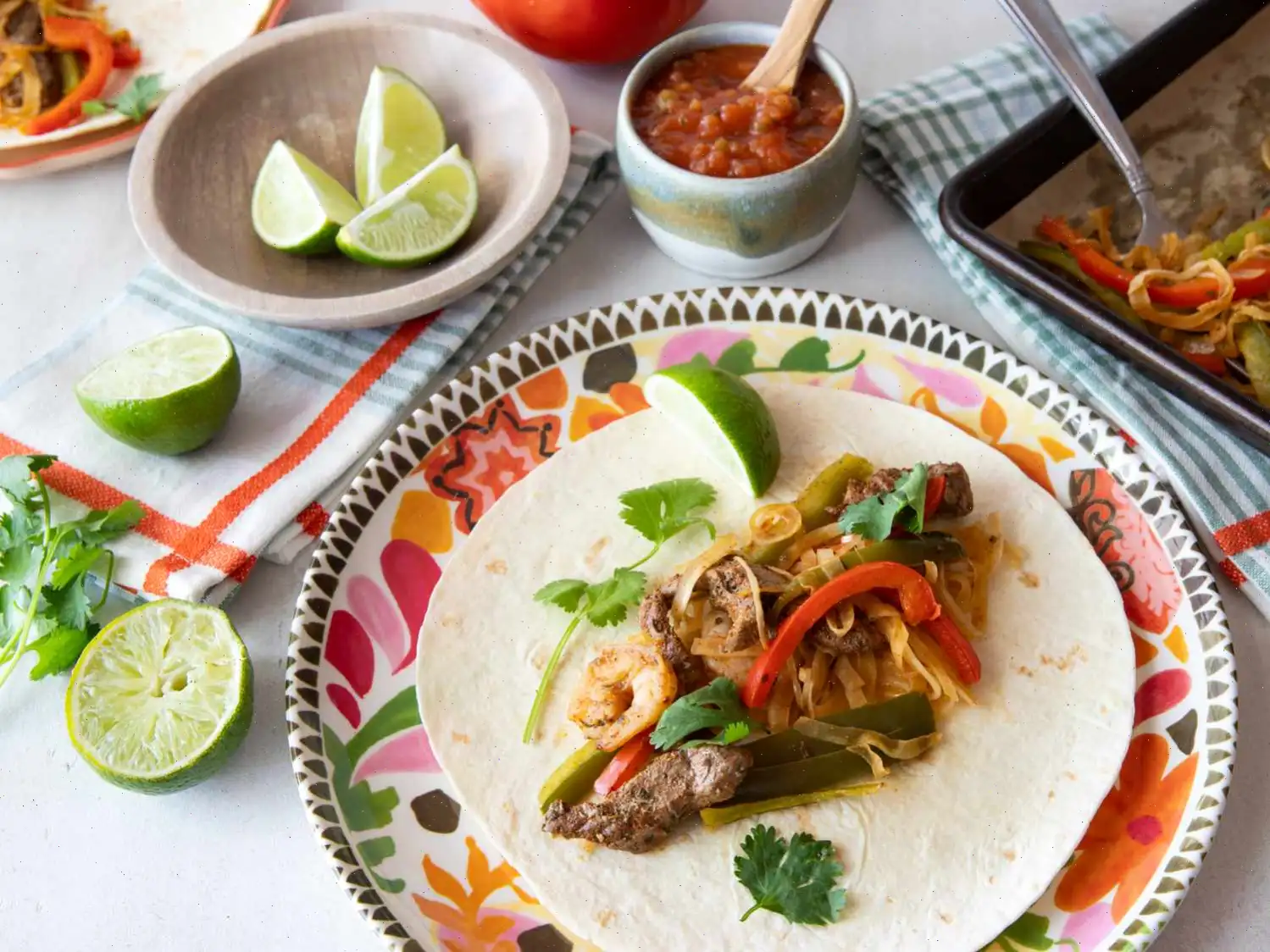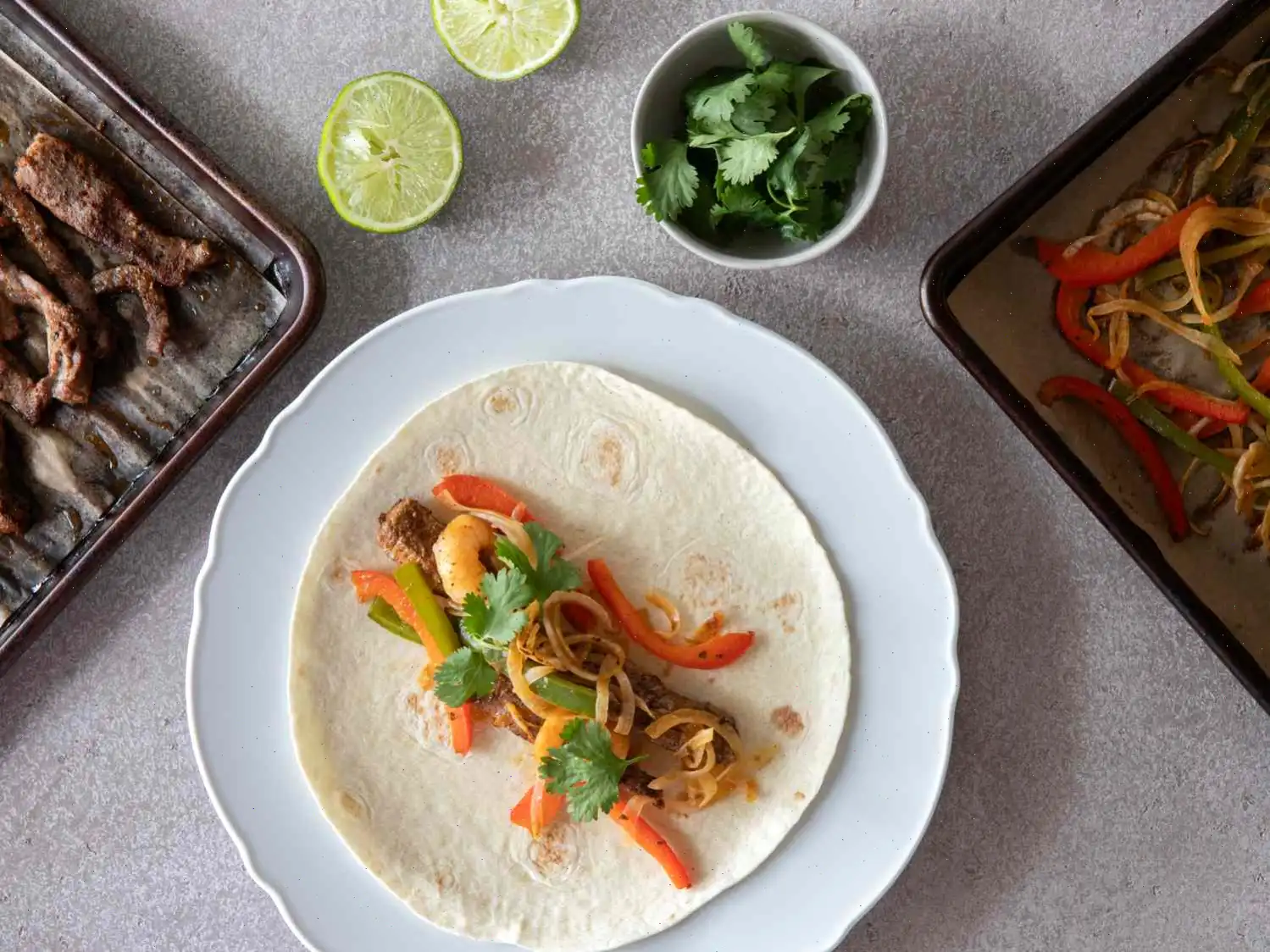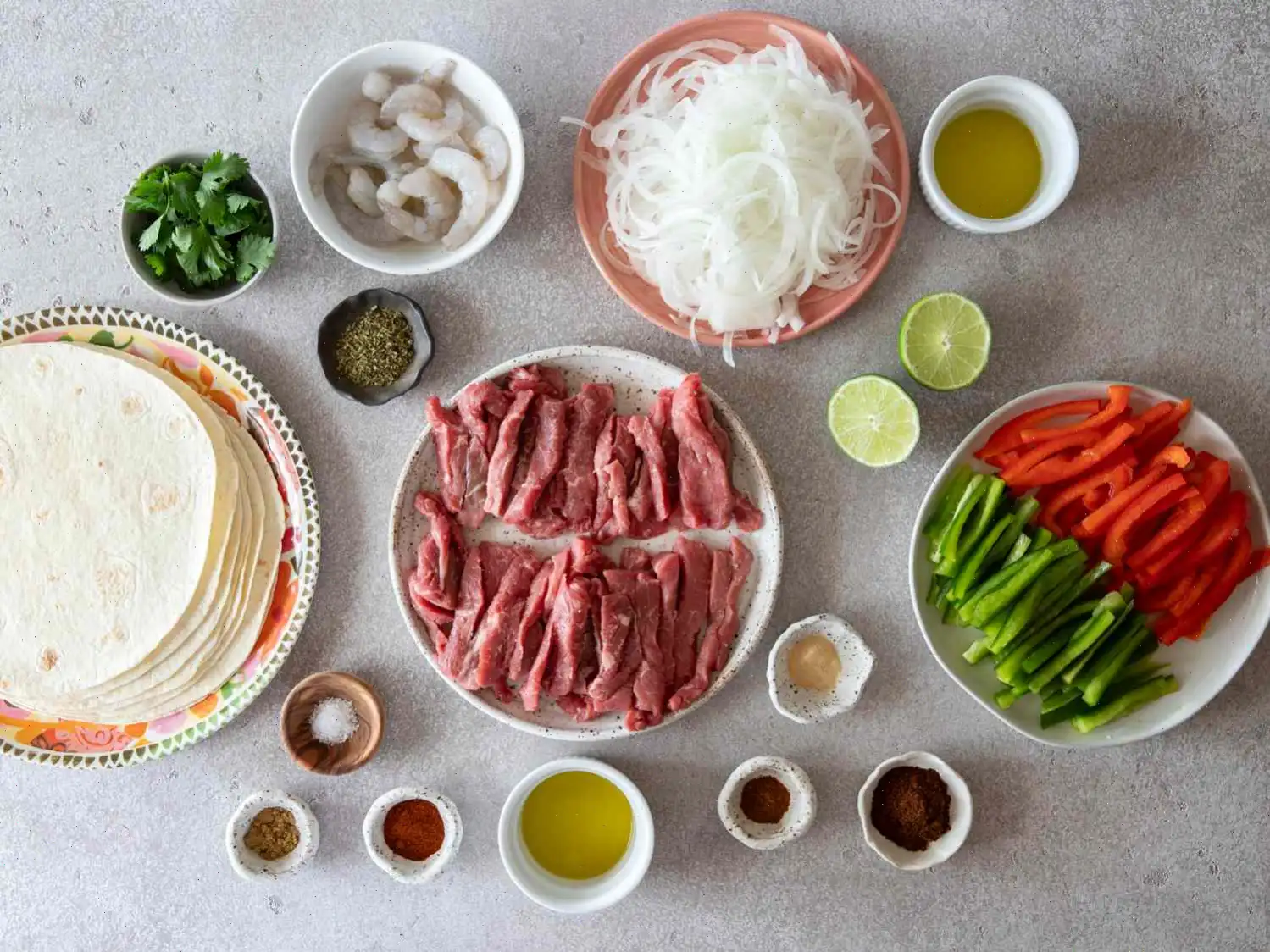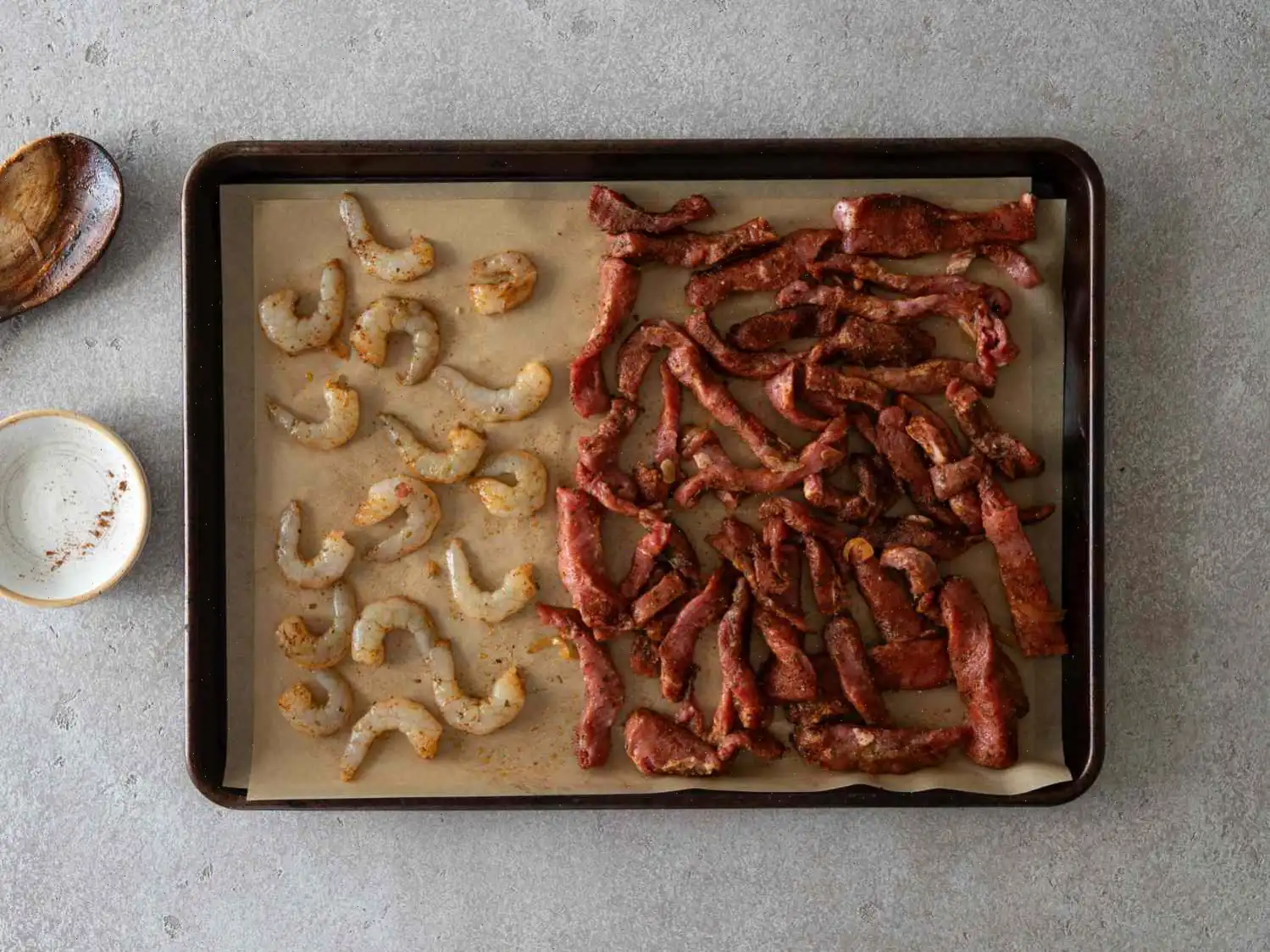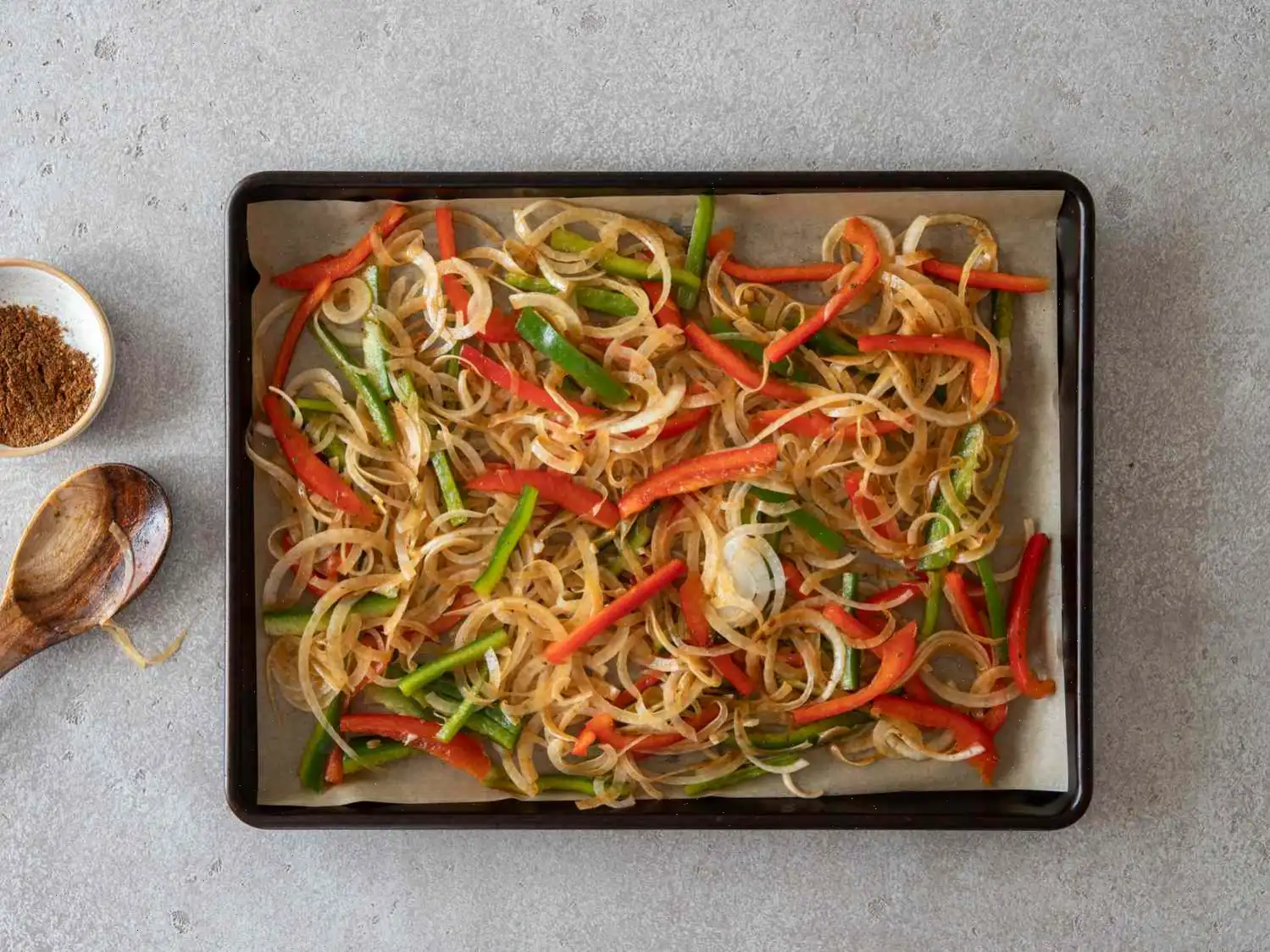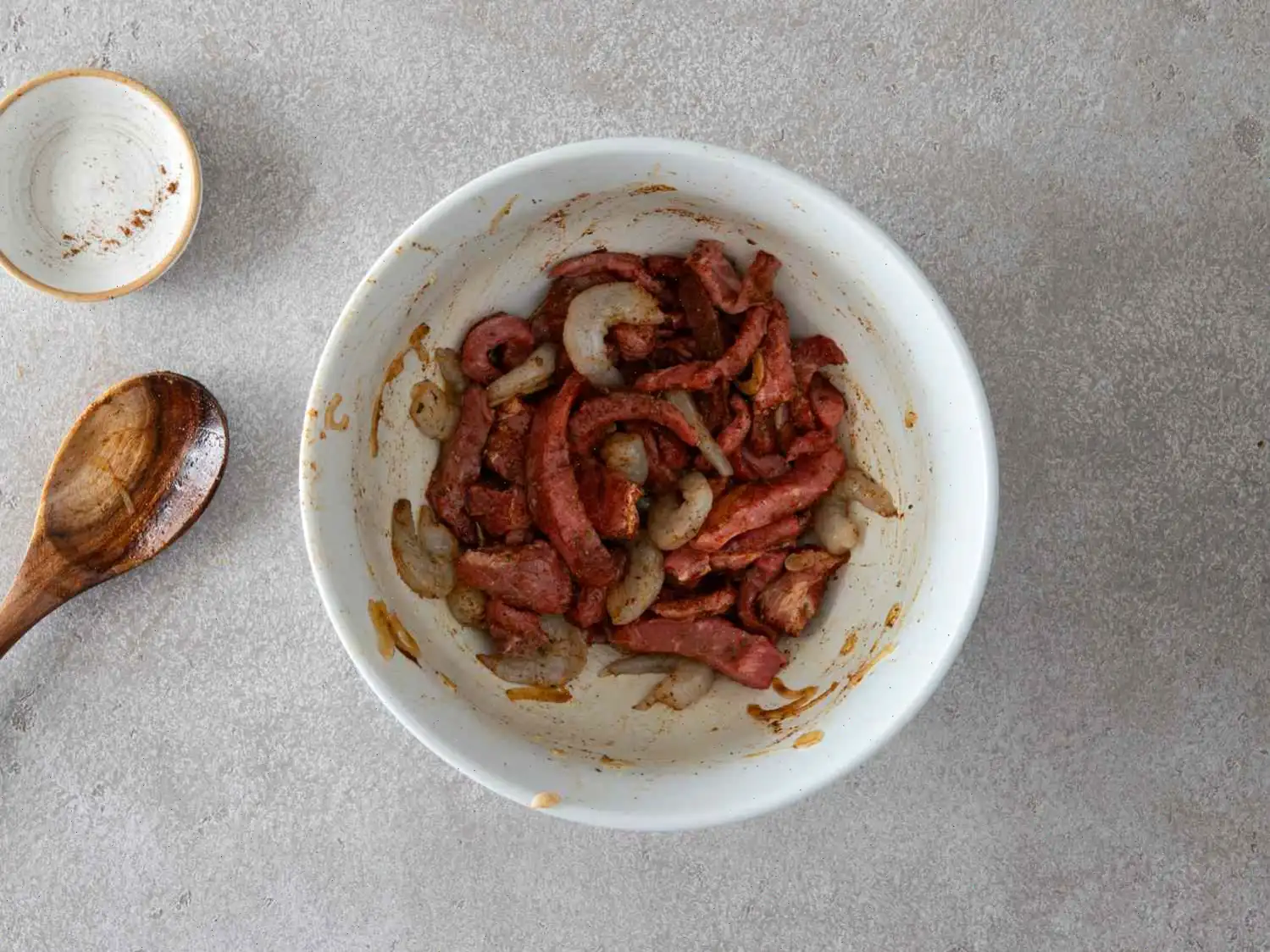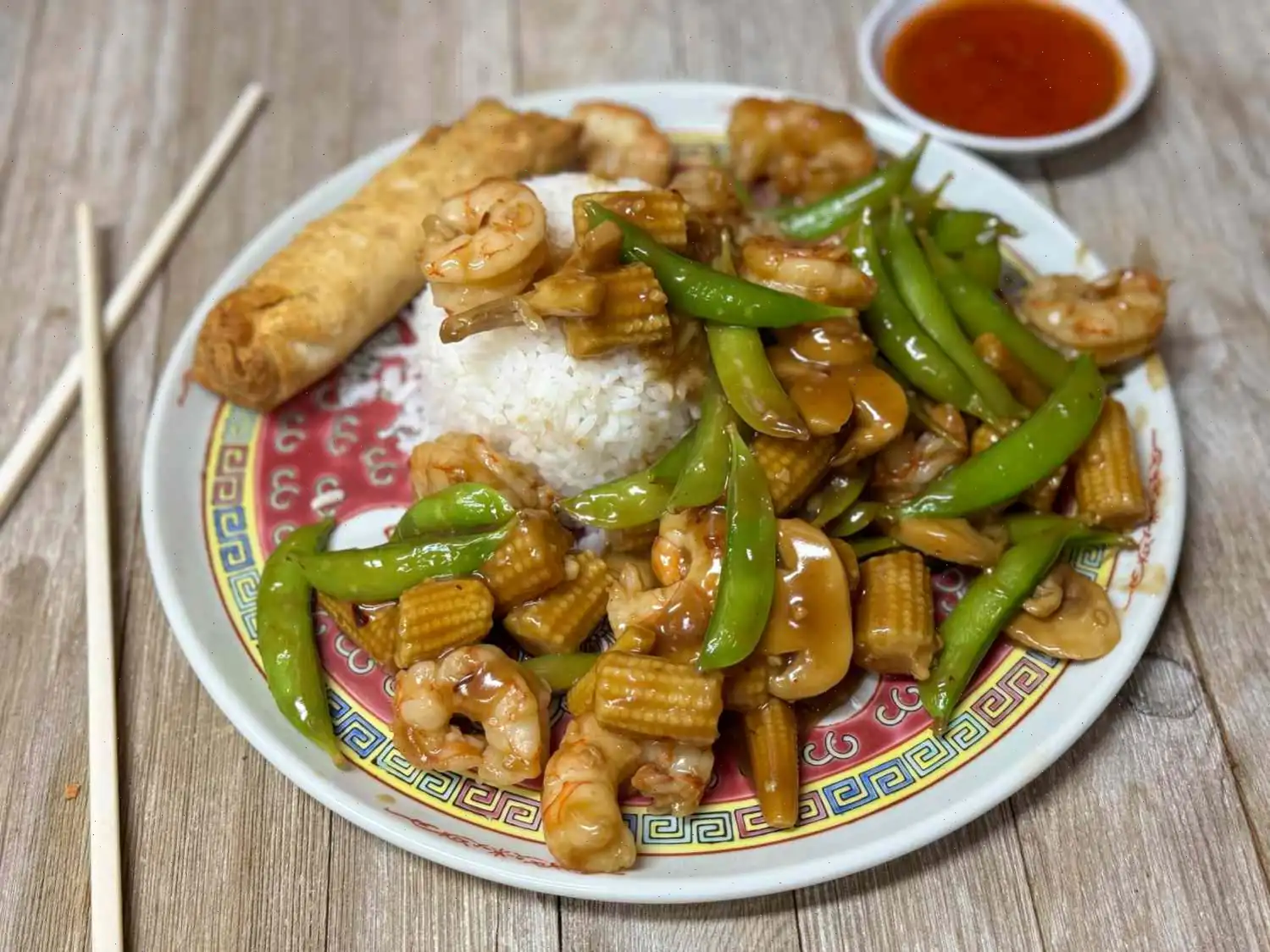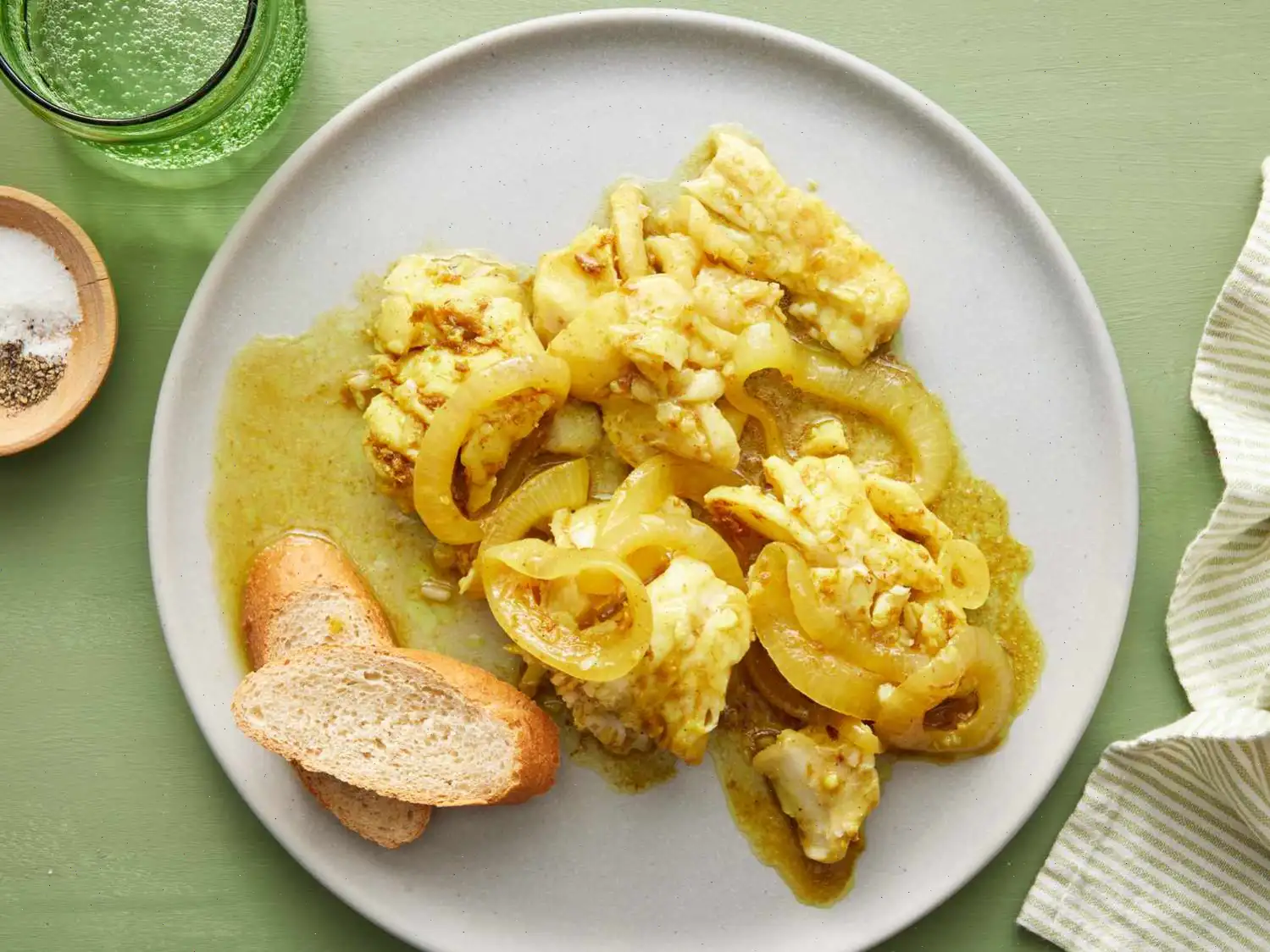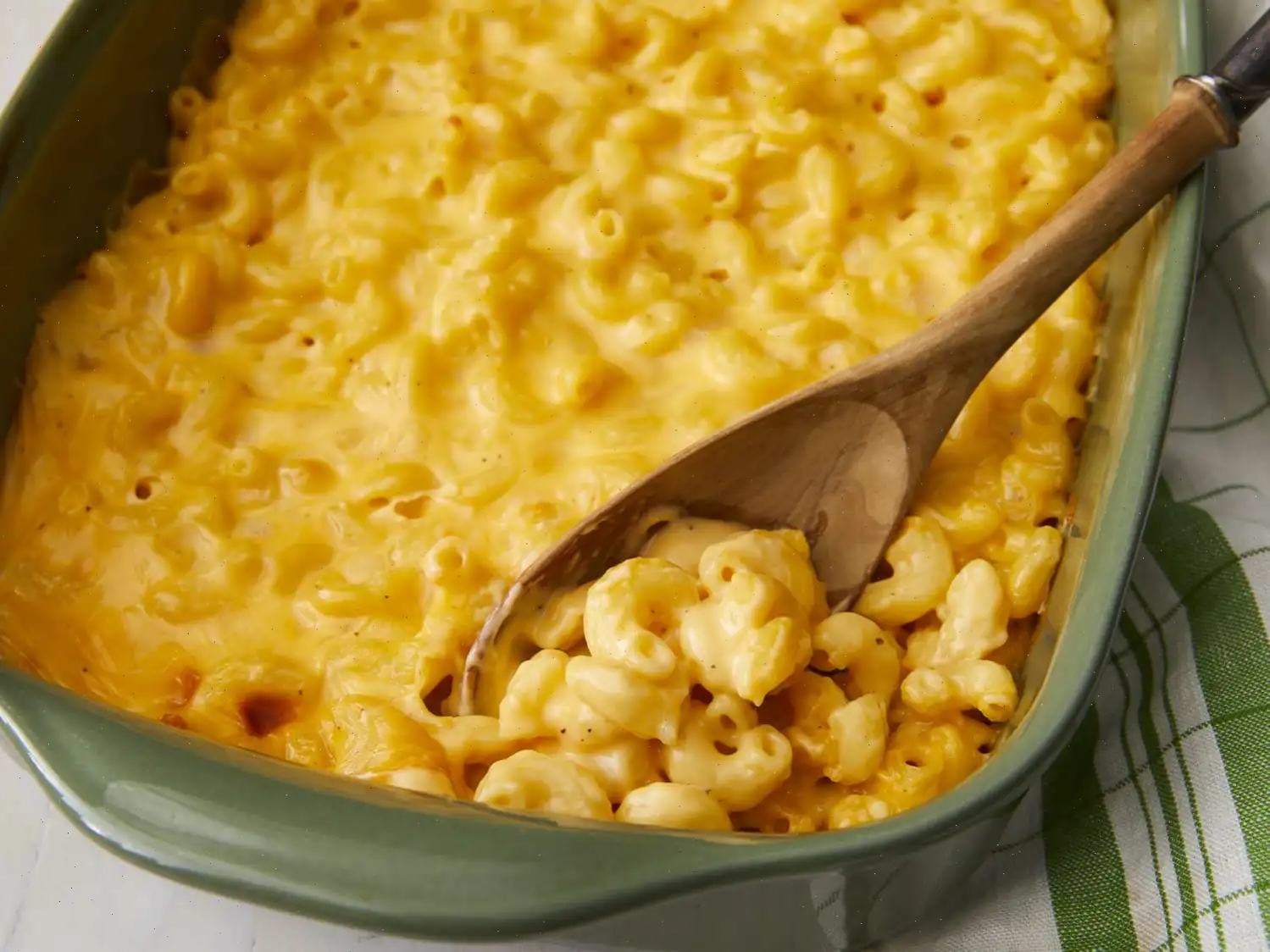
Sheet Pan Steak and Shrimp Fajitas Recipe
Ingredients
This recipe was designed for 4 servings. Adjust quantities as needed; cooking steps remain unchanged. Note that some recipes may not scale perfectly.
- 2 teaspoons chili powder
- 1 teaspoon smoked paprika
- 1 teaspoon Mexican oregano
- 1 teaspoon salt, or to taste
- 1/2 teaspoon ground cumin
- 1/2 teaspoon garlic powder
- 1/4 teaspoon cayenne pepper, or to taste
- 1 green bell pepper, thinly sliced
- 1 red bell pepper, thinly sliced
- 1 onion, thinly sliced
- 3 tablespoons olive oil, divided
- 1 pound sirloin steak, sliced 1/4-inch thick across the grain
- 16 medium shrimp, peeled and deveined
- 1 lime, halved
- 1/2 cup fresh cilantro sprigs
- 8 (8-inch) flour tortillas
Directions
- Preheat the oven to 425 degrees F (220 degrees C) and line two sheet pans with parchment paper or aluminum foil.
- In a small bowl, mix together chili powder, smoked paprika, oregano, salt, cumin, garlic powder, and cayenne pepper.
- In a large bowl, toss the sliced bell peppers and onion with 1 1/2 tablespoons of olive oil and half of the spice mixture. Spread vegetables evenly on one prepared sheet pan.
- In the same bowl, combine the steak and shrimp with the remaining 1 1/2 tablespoons of olive oil and the rest of the seasoning. Arrange steak on one side of the second pan and shrimp on the other.
- Place the pan with steak and shrimp on a lower rack beneath the vegetables and roast both pans for 10 minutes.
- Swap the positions of the pans after 10 minutes and roast for an additional 5 minutes, until shrimp are pink and curled, steak reaches medium doneness (140 degrees F / 60 degrees C), and vegetables are tender.
- If additional cooking is needed, remove shrimp and keep warm while the steak and vegetables finish roasting.
- Squeeze lime juice over the roasted ingredients on each pan.
- To serve, place a few strips of steak, vegetables, 2 shrimp, and some cilantro on each tortilla. Roll tightly and enjoy!
Cooks Notes
Using two pans prevents overcrowding, ensuring food roasts instead of steams. Enhance fajitas with avocado, cheese, sour cream, or any toppings you love.
Nutrition Facts
Servings: 4 | Calories: 1074 per serving
- Total Fat: 41g (53%) | Saturated Fat: 11g (57%)
- Cholesterol: 147mg (49%) | Sodium: 1761mg (77%)
- Total Carbohydrate: 121g (44%) | Dietary Fiber: 10g (34%) | Total Sugars: 4g
- Protein: 54g (108%)
- Vitamin C: 81mg (90%) | Calcium: 158mg (12%) | Iron: 10mg (55%) | Potassium: 910mg (19%)
*Percent Daily Values are based on a 2,000 calorie diet. Your values may vary depending on your calorie needs. Nutrient information is based on available data.
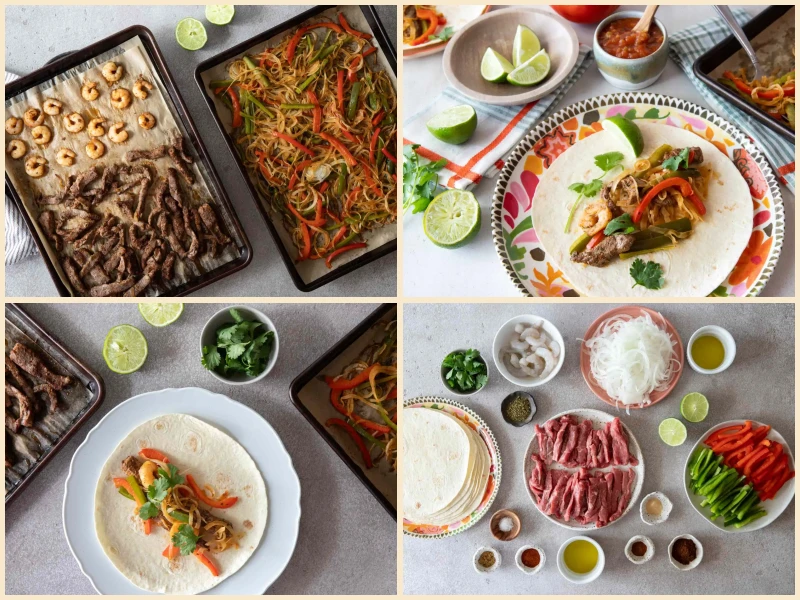
The Origins of Sheet Pan Steak and Shrimp Fajitas
Fajitas trace their roots to the ranchlands of Texas in the early 20th century, where Mexican cowboys, known as vaqueros, used inexpensive cuts of meat such as skirt steak. They would marinate the meat, grill it over open flames, and serve it with tortillas. The combination of seasoned meat, onions, and bell peppers became a staple of Tex-Mex cuisine. The modern sheet pan version, combining steak and shrimp, is a contemporary adaptation that streamlines cooking while retaining the classic flavors.
Regional Variations and Local Twists
While traditional fajitas originated in Texas, regional adaptations have flourished across North America. Coastal areas often incorporate seafood, like shrimp or fish, reflecting local culinary resources. In contrast, inland regions might emphasize beef or chicken. The sheet pan approach is particularly popular in urban kitchens, where convenience and minimal cleanup are valued. Bell peppers may vary in color and sweetness depending on the season, adding subtle regional differences to the dish.
Distinguishing Features from Similar Dishes
Fajitas are often confused with tacos, burritos, or quesadillas, but they are distinct in several ways. Unlike tacos, the meat and vegetables are served sizzling and separate from the tortilla, allowing diners to assemble their own wraps. Burritos are fully wrapped and typically include beans, rice, and cheese, while quesadillas are essentially cheese-filled tortillas with optional meat. Sheet pan steak and shrimp fajitas combine the smoky, spiced flavor of grilled meat with a simple, hands-on assembly, emphasizing freshness and customization.
Where Fajitas Are Commonly Served
Fajitas are a popular feature in both casual and upscale Mexican restaurants. They are often presented on sizzling cast-iron skillets, creating a dramatic presentation for diners. Home cooks increasingly adopt sheet pan methods for family dinners, potlucks, and gatherings because they simplify timing and allow simultaneous cooking of meat, seafood, and vegetables. They are especially favored for weeknight meals due to their efficiency without compromising flavor.
Interesting Facts About Fajitas
- The term fajita comes from the Spanish word faja, meaning belt or strip, referencing the cut of meat originally used.
- The addition of shrimp to traditional steak fajitas reflects a trend toward surf-and-turf pairings in Tex-Mex cuisine.
- Using a sheet pan reduces the need for multiple pans and helps achieve even roasting without steaming the vegetables.
- Lime juice, sprinkled at the end of cooking, enhances the flavor by balancing the smoky spices with bright acidity.
- Fajitas are celebrated every year in Texas on National Fajita Day, emphasizing their cultural significance in Tex-Mex heritage.
FAQ about Sheet Pan Steak and Shrimp Fajitas Recipe
Comments
Michael Brown
09/11/2022 10:16:49 AM
These are simple to prepare and the fajita flavor is absolutely delicious!


